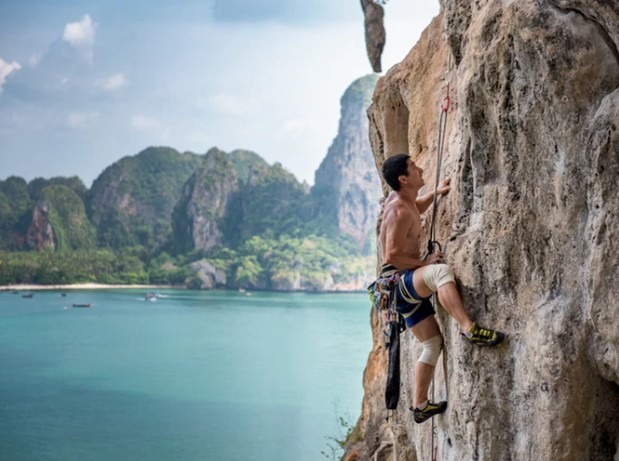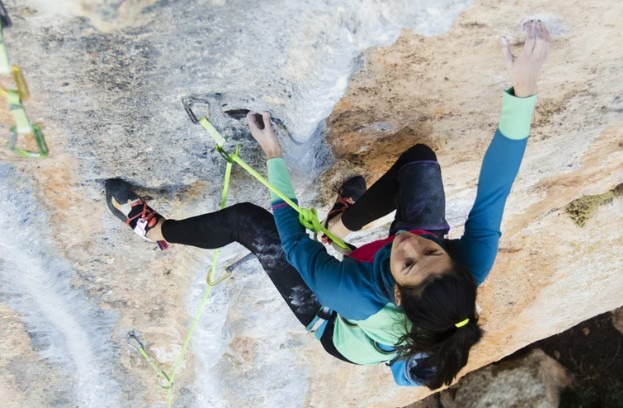Rock climbing is one of the most popular outdoor sports. Most people start rock climbing in a more controlled environment indoors and then graduate to the great outdoors. Safety in rock climbing is usually trusted to a rope that protects the climber in the event of a fall. Ropes are made of a core and a sheath. The core gives the rope its main strength, while the sheath protects the core from daily wear. Ropes can be either dynamic or static. Dynamic ropes are designed to absorb the energy of a falling person, while static ropes are used for anchoring, rappelling or hauling gear. Ropes designed for climbing range in different lengths and diameters. This will vary based on the length of your climb and the weight you need to haul.
Types of Climbing Ropes
Ropes are divided into both dynamic and static as mentioned previously. There are three main types of dynamic ropes geared towards ensuring the safety of a climber. According to the experts from Maple Leaf Ropes, single ropes are the most common dynamic ropes designed to be used by itself without any other rope types. Single ropes are generally easier to handle compared to other rope types. Single ropes are best for sport climbing, top-roping, big-wall climbing, and trad climbing. They can be identified with a circled 1 on each end. Half ropes are two ropes best used for ice climbing, mountaineering, and trad climbing. When you ascend, you clip one rope for protection on the left and the other for protection on the right. The ropes are supposed to run parallel and straight and reduce rope drag. Tying two half ropes together allows you to rappel twice as fast compared to a single rope. Having two ropes provides an extra safety measure in case one of them gets damaged. The disadvantages to half ropes is that they require more skill and effort and are heavier than a single rope. The third dynamic rope type is called a twin rope. Twin ropes are very similar to half ropes, however, in twin ropes you always have to clip both strands through each protection piece just like a single rope. They are usually thinner, making them lighter, but introduce more drag because they are more similar to a single rope. Twin ropes have the same advantages and disadvantages to half ropes.
Climbing Rope Features
When comparing climbing ropes it is important to look for the following features. Dry-treated ropes offer maximum moisture protection. If ropes absorb water they get heavier and have a lower strength as a result. Additionally, if you are climbing in the cold, the wet rope can freeze and become stiff. Other features include middle marks which help identify the midpoint of the rope’s length. This is essential when rappelling. Bicolor differentiates two halves which are easy to identify both the rope and middle mark. End warning marks are essential to let a climber know that the end of the rope is near.
Rope Diameter and Length
In general skinnier ropes are lighter, but less durable and require more skill. Thicker ropes offer more abrasion resistant and are better for frequent use. Single ropes up to 9.4 mm thick are ideal for long multi-pitch climbs, however, they are not rated to hold as many falls as thicker ropes. 9.5 to 9.9 mm single ropes are good for all-around use for trad and sport climbing. Single ropes over 10 mm in diameter are best suited for indoor climbing and top roping. Half ropes and twin ropes have a diameter of 8-9 mm and 7-8 mm, respectively. The lower diameter makes them lighter while still being safe since a climber would have the redundancy from using two ropes. Rock climbing ropes vary in length from 30 to 80 meters, with the standard being 60 meters. For outdoor climbing, the general rule is that at least half the rope length be equal to or greater than the route you are climbing. Indoor climbing, on the other hand, will require short lengths as long as they are long enough to safely lower the climber to the ground.
Rock climbing can be a very exciting way to explore nature and be physically active. However, it can be an intimidating task to get started. It is recommended that everyone take proper lessons and start climbing indoors until they are comfortable enough to move outdoors. Climbers should always be familiar with their ropes and harnesses because they are the two most important safety gear required to enjoy the sport.


